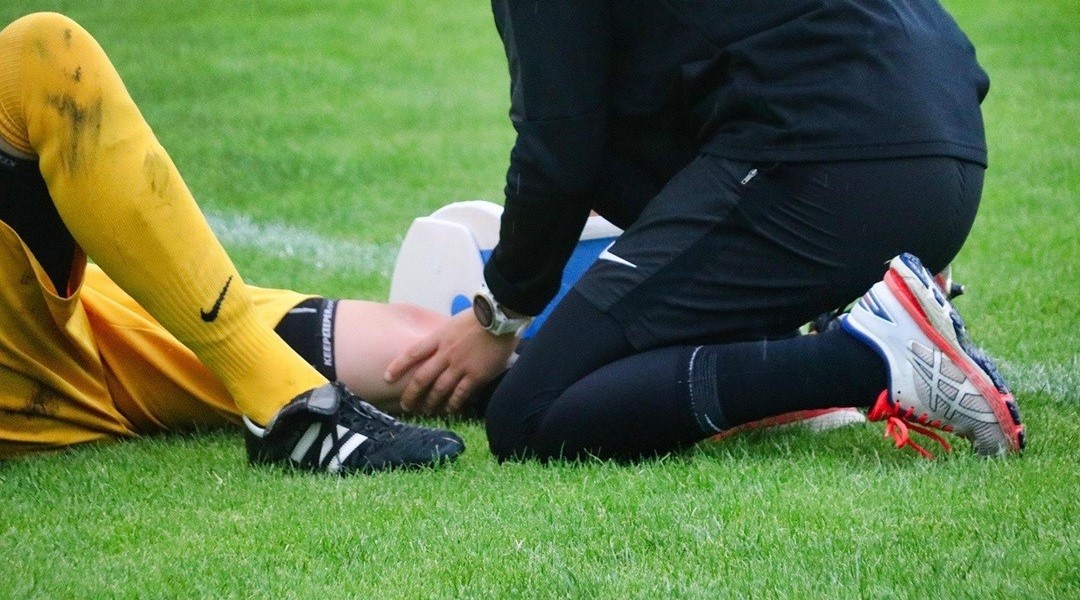Researchers at the MERLN Institute for Technology Inspired Regenerative Medicine at Maastricht University in the Netherlands say bioprinted, self-healing hydrogels could one day help treat common ligament injuries.
Around half of all injuries to the musculoskeletal system (the body system that includes the bones and the structures that support them and enable movement) affect the ligaments and tendons. In the United States, there are around 17 million ligament injuries a year, many of which require surgery. Unfortunately, ligaments heal slowly and sometimes incompletely, often losing their strength and flexibility.
“The current surgical options for ligament regeneration are typically autografts and allografts,” said Hongjuan Weng, who led the study, recently published in Advanced Healthcare Materials. An autograft is surgery that uses grafted tissue from the patient’s body, while an allograft uses tissue from a human donor.
Modern surgical techniques have limitations, however. Donor sites can be weakened when tissue is removed, so surgeons are limited to only taking small amounts. With allografts, there’s also a risk of an immune system rejection or disease transmission.
Artificial ligaments have also been used for ligament reconstruction, but these are also imperfect solutions. “They are made by non-degradable biomaterials like polyethylene terephthalate and polyester as permanent implant, which may lead to [inflammation of the membrane inside the joint] and immune rejection,” Weng said. “Besides, to implant these artificial ligaments, two bones connected by ligament need to be drilled through with two tunnels, which may lead to additional bone injuries and an increasing risk of failure.”
In theory, these issues could be overcome with tissue regeneration using collagen hydrogel scaffolds or implants. Collagen is the main building block of the skin, bones, muscles, and connective tissue. Ligaments are subject to a lot of daily stress, however, and collagen alone isn’t robust enough for this application. “The biggest drawback of collagen hydrogels for ligament tissue engineering is their low mechanical properties,” said Weng. “The second drawback of collagen hydrogels is significant shrinkage due to the cell extraction over time, which may pose problems to the tissue that requires a long time to repair, for example ligaments.”
In their proof-of-concept study, the MERLN Institute researchers developed a “cell-laden hydrogel” made from collagen peptides — tiny, water-soluble collagen protein fragments that have been chemically modified to form stable structures when exposed to light. Living stem cells embedded inside the gel can use the structure as a scaffold while growing into regenerated tissue.
Cell-laden hydrogels could, in theory, be combined with biodegradable, 3D-printed scaffolds to create hybrid implants that would help support the body’s own tissue regeneration. With refinements, they could help address some of the problems with collagen hydrogels, like mechanical strength, stability, poor water solubility, and temperature sensitivity.
Researchers will need to work through some of the details of this approach before it can be used in modern medical applications. For example, it’s unclear how these hydrogels will interact with injured tissue, or how bioprinted materials will affect the speed of tissue regeneration once inside a human body. “The next steps will be to further improve the mechanical properties of cell-laden hydrogels by combining hydrogel with stiff biodegradable scaffold,” said Weng, who added that in vivo (in the body) research will also need to be completed.
Though the research is still very preliminary, cell-laden hydrogels are a promising possible solution to a significant problem, offering the potential for complete recovery from a very common, often challenging injury.
Source: Hongjuan Weng, et al. Mechanical Reinforced and Self-healing Hydrogels: Bioprinted Biomimetic Methacrylated Collagen Peptide-Xanthan Gum Constructs for Ligament Regeneration. Advanced Healthcare Materials (2025). DOI: 10.1002/adhm.202502341
Featured image: planet_fox via Pixabay














